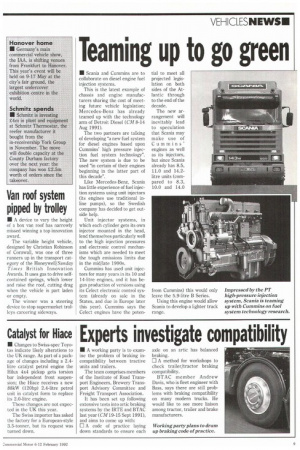Teaming up to go green
Page 11

If you've noticed an error in this article please click here to report it so we can fix it.
• Scania and Cummins are to collaborate on diesel engine fuel injection systems.
This is the latest example of chassis and engine manufacturers sharing the cost of meeting future vehicle legislation; Mercedes-Benz has already teamed up with the technology arm of Detroit Diesel (CM 8-14 Aug 1991).
The two partners are talking of developing "a new fuel system for diesel engines based upon Cummins' high pressure injection fuel system technology". The new system is due to be used in certain of their engines beginning in the latter part of this decade".
Like Mercedes-Benz, Scania has little experience of fuel injection systems using unit injectors (its engines use traditional inline pumps), so the Swedish company has decided to get outside help.
Unit injector systems, in which each cylinder gets its own injector mounted in the head, lend themselves particularly well to the high injection pressures and electronic control mechanisms which are needed to meet the tough emissions limits due in the mid/late 1990s.
Cummins has used unit injectors for many years in its 10 and 14-litre engines, and it has begun production of versions using its Celect electronic control system (already on sale in the States, and due in Europe later this year). Cummins says the Celect engines have the poten
tial to meet all projected legislation on both sides of the Atlantic through to the end of the decade.
The new arrangement will inevitably lead to speculation that Scania may make use of Cummins' engines as well as its injectors, but since Scania already has 8.5, 11.0 and 14.2litre units (compared to 8.3, 10.0 and 14.0 from Cummins) this would only leave the 5.9-litre B Series.
Using this engine would allow Scania to develop a lighter truck range.




































































































